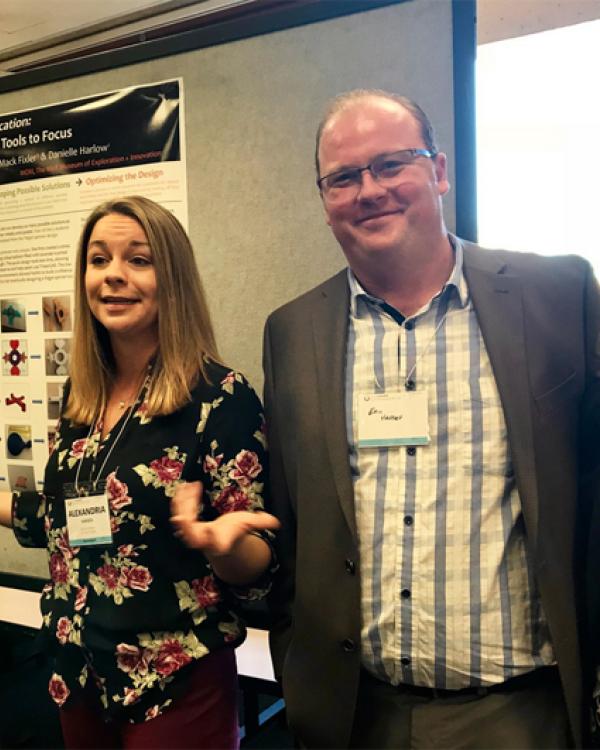
Gevirtz Graduate School of Education faculty and students attended the 7th Annual FabLearn Conference at Stanford University on October 21-22. The conference, run in-cooperation with Association for Computing Machinery, Special Interest Group on Computer-Human Interaction (ACM SIGCHI), brings together key influencers and thought-leaders from around the world in education, policy-making, academia, design, research, and maker communities to learn, present, and discuss digital fabrication in education, the maker culture, hands-on learning, and instructional tools. The conference has two primary goals: establishing the current state of the field by gathering information about the work conducted by those in the field, and disseminating information about best practices and tools, and connecting researchers with practitioners, policy-makers, and pioneering educators. This year’s theme was “Creating a Sustainable Ecosystem for Making in Education.”
Mandy McLean, Danielle Harlow,and Julie Bianchini presented their paper “Dancing Robots: A Collaboration between Elementary School and University Engineering Students.” This project was a collaboration between UCSB Mechanical Engineering, UCSB Education, and Isla Vista Elementary school students where children and undergrad engineering majors collaborated to create a robot flash mob of dancing robots.
Alexandria Hansen and Danielle Harlow presented their paper “Fidgeting with Fabrication: Students with ADHD Making Tools to Focus.” This project was a collaboration between UCSB Education, a special education class, and the Wolf Museum of Exploration and Innovation (MOXI)—students in the special education course designed and fabricated their own fidget toys.
Danielle Harlow also presented “Roll It Wall: Developing a Framework for Evaluating Practices of Learning.” This project was a study of visitor engagement at one of MOXI’s exhibits where visitors build and test their own ball roller coasters.
Jim Gribble & David Sanosa presented a tech demo: “BlockbasedVR: A 3D Block-Based Visual Programming Application in Immersive Virtual Reality.” This is a demo of a new technology to allow students to program by moving blocks around in a virtual reality space.